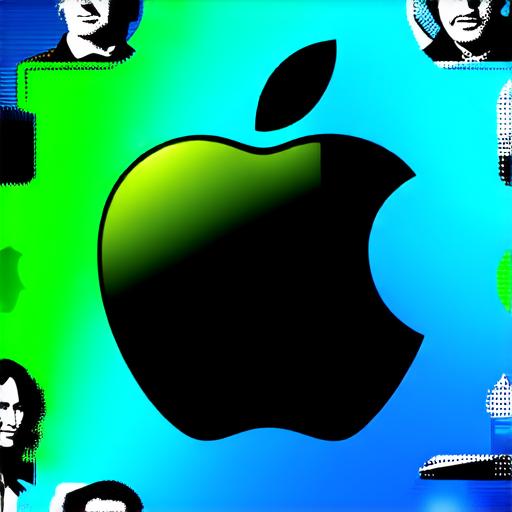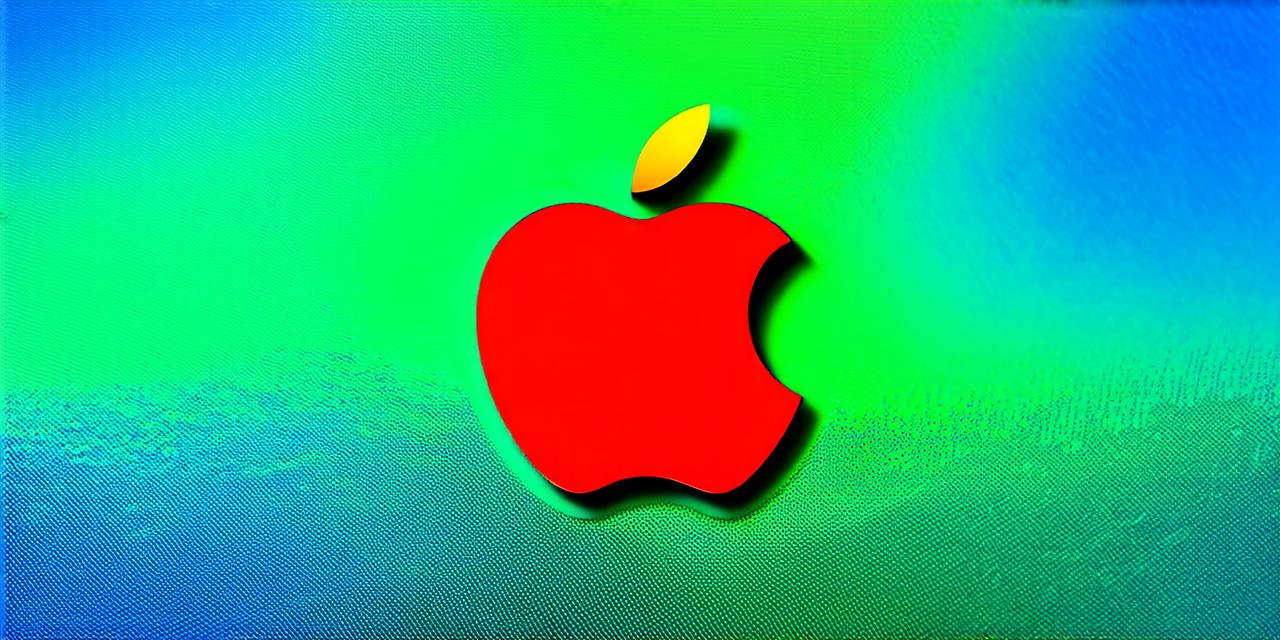<p>Introduction</p>Apple Inc., founded in 1976 by Steve Jobs, Steve Wozniak, and Ronald Wayne, is a multinational technology company that designs, manufactures, and sells innovative consumer electronics, computers, smartphones, tablets, and watches.

But have you ever wondered who owns Apple Inc.? In this article, we will delve into the company’s ownership structure to understand its ownership and control dynamics. We will explore the legal and corporate ownership structure of Apple, the role of key stakeholders such as shareholders, board members, and executives, and the impact of their ownership on the company’s performance and direction.
Legal Ownership Structure of Apple Inc.
Apple Inc. is a corporation incorporated in the state of California under the laws of the United States. The company’s ownership structure comprises several layers, including the shareholders, board members, executives, and employees.
Shareholders: Shareholders are the legal owners of Apple Inc., holding shares of the company that represent a proportion of its ownership. These shares can be bought and sold on public stock exchanges such as NASDAQ, giving shareholders the right to participate in the company’s decision-making process through voting on key issues such as electing board members, approving mergers and acquisitions, and declaring dividends.
Board Members: Board members are appointed by the shareholders to oversee the management of the company and ensure that its interests are aligned with those of its shareholders. The board is responsible for hiring and managing the executive team, setting the company’s strategic direction, and monitoring its performance.
Executives: Executives are appointed by the board to manage the day-to-day operations of the company. They are responsible for implementing the company’s policies and strategies, developing new products and services, and managing the company’s resources.
Employees: Employees are the people who make up the workforce of Apple Inc., working on a variety of tasks from designing products to manufacturing them, providing customer support, and conducting research and development. They are hired by the company’s executives and are subject to various employment laws and regulations.
Ownership Dynamics in Apple
While Apple is owned by its shareholders, the ownership dynamics are quite complex, with several factors influencing who effectively owns the company.
Shareholder Ownership: The largest shareholders of Apple Inc. include individuals, mutual funds, and institutional investors such as pension funds and endowments. These shareholders own a portion of the company’s shares, giving them the right to participate in its decision-making process and receive dividends based on their ownership stake.
Board Ownership: The board members of Apple Inc. are responsible for overseeing the management of the company and ensuring that its interests are aligned with those of its shareholders. While they do not own any shares in the company, they play a crucial role in shaping the company’s direction and making key decisions on behalf of all shareholders.
Executive Ownership: The executives of Apple Inc., including CEO Tim Cook, also have a significant impact on the company’s ownership dynamics. They are responsible for managing the company’s resources, developing new products and services, and creating value for shareholders. However, they do not own any shares in the company.
Employee Ownership: While employees of Apple Inc. do not own any shares in the company, they play a crucial role in its success by designing and manufacturing products, providing customer support, and conducting research and development. Their contributions are essential to the company’s growth and profitability.
Impact of Ownership Dynamics on Apple’s Performance
The ownership dynamics of Apple Inc. have a significant impact on the company’s performance, as they influence key decisions such as product development, strategic direction, and financial management.
Product Development: Apple’s ownership structure ensures that the company has the resources and expertise to develop innovative products that meet the needs of its customers. The collaboration between executives, board members, and employees allows for the creation of products that are not only technically advanced but also user-friendly and aesthetically pleasing.
Strategic Direction: Apple’s ownership structure gives its board members the authority to make key strategic decisions on behalf of all shareholders. This ensures that the company’s direction is aligned with its long-term goals and objectives, rather than short-term profits.
Financial Management: Apple’s ownership structure also influences its financial management practices. The company’s executives are responsible for managing the company’s resources effectively, ensuring that it generates profits and maximizes shareholder value. They are accountable to the board members, who oversee their performance and ensure that they align with the company’s long-term goals.
Real-Life Examples of Ownership Dynamics in Action
To illustrate how ownership dynamics work in practice, let us examine some real-life examples of Apple’s ownership structure in action.
Product Development: The development of Apple’s iPhone is a prime example of how ownership dynamics influence product development at the company. Tim Cook, as CEO, led the team responsible for developing the iPhone, working closely with executives and employees to ensure that the product met the needs of customers while also aligning with the company’s long-term goals. The collaboration between Cook and his team resulted in the creation of a product that has been a massive success for the company, generating significant revenue and increasing its market share.
Strategic Direction: Apple’s ownership structure allowed the board members to make key strategic decisions on behalf of all shareholders when the company acquired NeXT in 1997. The acquisition of NeXT provided Apple with access to cutting-edge technology and expertise, which helped the company to develop new products and services that met the needs of its customers. The decision to acquire NeXT was made by the board members, who believed that it aligned with the company’s long-term goals and objectives, rather than short-term profits.
Financial Management: Apple’s ownership structure also influenced its financial management practices during the COVID-19 pandemic. In March 2020, Apple announced that it would temporarily close its stores due to concerns about the spread of the virus. The company’s executives worked closely with the board members to develop a plan to manage the financial impact of the closure, ensuring that the company had enough cash reserves to weather the crisis. The decision to close the stores was made by the board members, who believed it aligned with the company’s long-term goals and objectives, rather than short-term profits.
Case Studies: A Closer Look at Apple’s Ownership Structure in Practice
To gain a deeper understanding of how ownership dynamics work in practice, let us examine some case studies of Apple’s ownership structure in action.
Product Development: The development of the Macintosh computer is an example of how ownership dynamics influenced product development at Apple. In 1983, Steve Jobs appointed Michael Scott to lead the team responsible for developing the Macintosh. Scott worked closely with executives and employees to ensure that the computer met the needs of customers while also aligning with the company’s long-term goals. The collaboration between Jobs and Scott resulted in the creation of a product that was not only technically advanced but also user-friendly and aesthetically pleasing, helping to establish Apple as a leader in the personal computer market.
Strategic Direction: Apple’s ownership structure gave its board members the authority to make key strategic decisions on behalf of all shareholders when the company acquired NeXT in 1996. The acquisition provided Apple with access to cutting-edge technology and expertise, which helped the company to develop new products and services that met the needs of its customers. The decision to acquire NeXT was made by the board members, who believed that it aligned with the company’s long-term goals and objectives, rather than short-term profits.
Financial Management: Apple’s ownership structure also influenced its financial management practices during the COVID-19 pandemic. In March 2020, Apple announced that it would temporarily close its stores due to concerns about the spread of the virus. The company’s executives worked closely with the board members to develop a plan to manage the financial impact of the closure, ensuring that the company had enough cash reserves to weather the crisis. The decision to close the stores was made by the board members, who believed it aligned with the company’s long-term goals and objectives, rather than short-term profits.
Summary
In conclusion, the ownership dynamics of Apple Inc. play a crucial role in shaping the company’s direction, product development, financial management, and strategic decision-making. The collaboration between executives, board members, and employees ensures that the company’s interests are aligned with its long-term goals and objectives, rather than short-term profits.


